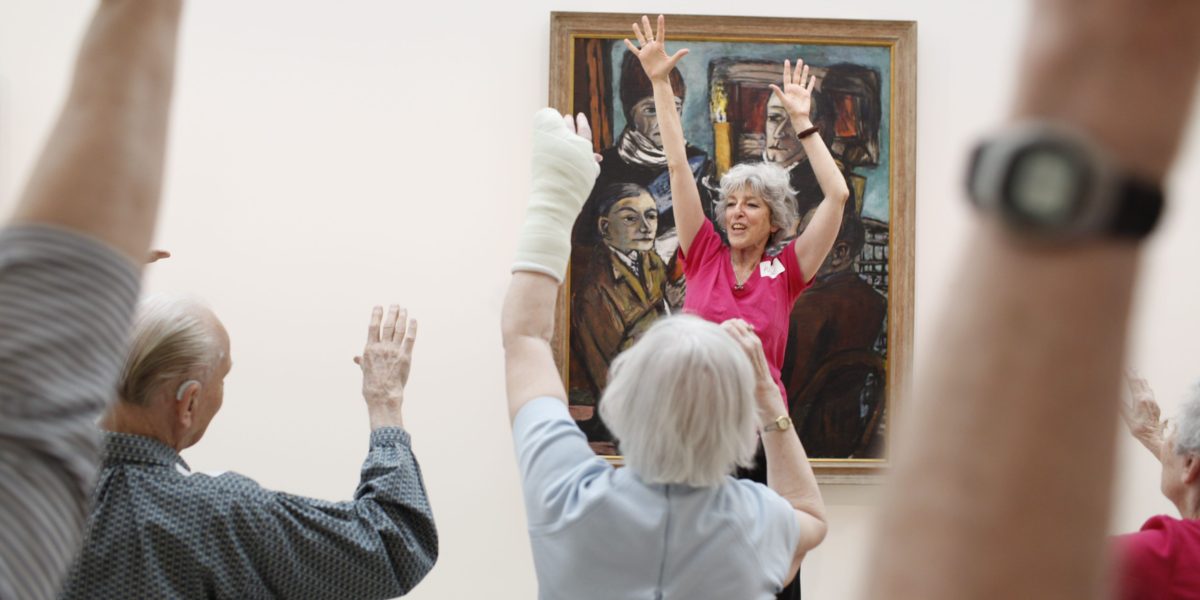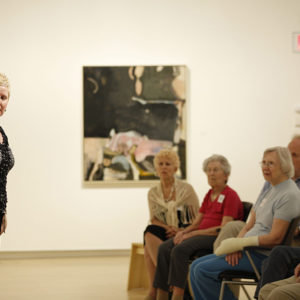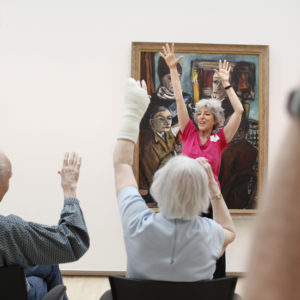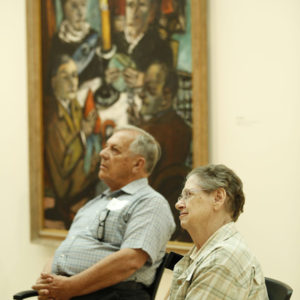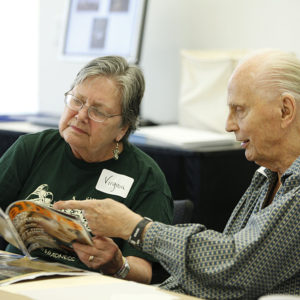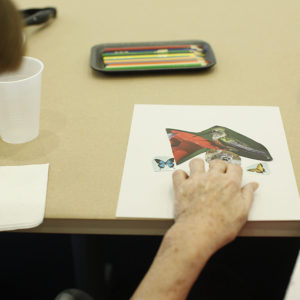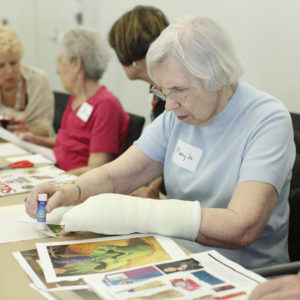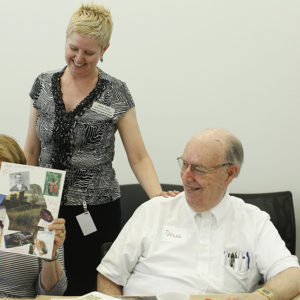Take a deep breath. Smooth your brow. Raise your hands and stomp your feet.It’s time to talk about art.
Welcome to Kemper Art Reaches Everyone (KARE), a new arts engagement program designed for people with early-onset to moderate Alzheimer’s.
Sponsored by the Mildred Lane Kemper Art Museum at Washington University in St. Louis — in collaboration with Maturity and Its Muse, a local nonprofit organization — the free monthly sessions combine art and art-making with structured conversation and light physical exercise designed to “awaken” participants both physically and mentally.
“The idea is to engage both patients and caregivers,” says Lynn Friedman Hamilton, president of Maturity and Its Muse. “This gives them an opportunity to go out and do something together — to interact with friends, with relatives, with spouses.
“Patients tend to live in the moment,” Hamilton says. “We want to make those moments happy ones.”
Communication strategies
“Looking at the science, we know quite a bit about effective communications strategies for people with Alzheimer’s disease,” says Brian Carpenter, PhD, associate professor of psychology in Arts & Sciences, who studies aging and communication.
Some strategies are intuitive, such as keeping statements short and simple. Others are more subtle. For example, when posing questions, Carpenter — who consulted with the museum to design KARE and trained students to act as facilitators — suggests providing options from which to choose, rather than leaving answers open-ended. Alternatively, he suggests asking questions for which there is no right or wrong answer.
“At this stage, nothing is going to halt the progress of the disease,” Carpenter says. “But we know that it’s good for patients to get out of the house, to be stimulated verbally and visually. There are benefits to mood, to sleep, to energy level, to socialization — particularly for people with Alzheimer’s, whose lives have a tendency to become more and more circumscribed.”
Where is the Cumberland Gap?
At a recent pilot session, 10 participants gathered in the Kemper Art Museum’s Bernoudy Permanent Collection Gallery to discuss George Caleb Bingham’s iconic Daniel Boone Escorting Settlers through the Cumberland Gap (1851-52).
Alice Bloch, a dancer who has taught movement therapy at WUSTL and elsewhere, leads the participants through a series of light exercises and then yields the floor to Allison Taylor, the museum’s manager of education programs.
“Does anybody know where the Cumberland Gap is?” Taylor begins.
A chorus of voices: “Tennessee.” “Eastern Kentucky.” “Virginia.”
Correct, says Taylor. The gap sits at the juncture of all three states, and it was an important passageway for the settling of the American West.
The group teases out details: the season, the landscape, the figures following Boone.
“If you were moving to a new land, who would you bring?” Taylor asks.
“A doctor,” shoots back Afra Jean Walker, attending with her husband, Douglas. “If you’re lucky.”
Next comes another Western scene, Charles Ferdinand Wimar’s The Buffalo Hunt (1860). Taylor asks everyone to imagine the hunt’s sounds, smells and — passing around small swatches of fur and leather — tactile sensations.
The group turns to Les Artistes mit Gemüse (Artists with Vegetable) by the German artist and former WUSTL professor Max Beckmann. Painted in Holland in 1943, it depicts Beckmann and three fellow exiles from Hitler’s Germany huddled pensively around a small table. Each clutches a single, slightly mysterious object: a mask, a fish, a mirror, a vegetable that may or may not be a carrot.
“What words would we use to describe these men?” Taylor asks.
“Grim,” someone says. “Distressed.” “Dour.” “Anxious.”
“I think they’re a group of men who don’t know where they are,” says George Benson, a retired psychoanalyst. “And they need to get it straightened out.
“They don’t know what to say.”
We all need good wishes
The group breaks and reassembles in a downstairs classroom. Food and art materials — paper, pencils, scissors, magazines — await. Caregivers aid patients in crafting collages of their own.
Rochelle Bell, attending with her husband, Ronald, continues the Western theme with a collage of the Black Hills of South Dakota. Mary Jo Pauls curates a collection of dresses.
“With four girls, she did a lot of sewing,” explains Pauls’ husband, Allen.
To close, Bloch leads a final set of movements, each accompanied by a few short, prayer-like words:
“To the earth,” says Bloch, bending downward. “To the sea,” she says, gesturing outward. “To the skies,” she says, hands reaching up.
“To myself, because we all need good wishes,” Bloch continues, as participants hug their own shoulders.
“To the world.”
The group is silent a moment, then begins to disperse.
Ronald Bell gets the last word:
“When can we do it again?”
